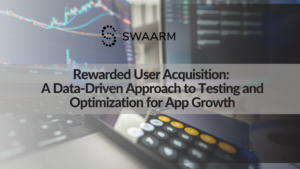Why is automated reporting crucial for marketers? In a survey conducted by Hubspot, they discovered that marketers typically spend 16 hours each week performing routine tasks, accounting for an assumed workweek of 45 hours (since few marketers actually work 40). That means almost one-third of their time is dedicated to accomplishing repetitive tasks. That’s so much productive time going down the drain.
In this fast-paced world of digital advertising, only efficient marketers succeed. Every minute lost on manual tasks means less time spent optimizing campaigns and increasing returns – this article seeks to explore the significance of efficiency for search engine monetization and automated reporting as well as its effect on revolutionizing workflows in the realm of digital advertising.
What is automated reporting?
Automated reporting refers to the process of creating and disseminating reports without any manual intervention, often through software or tools explicitly designed to do this task. When applied in digital marketing and advertising environments, automated reporting relies on collecting data from platforms, analytics tools, databases, etc – such as advertising platforms or analytics software – before using predefined parameters or templates as criteria to generate reports automatically.
Automated reporting tools aim to streamline the reporting process for marketers and analysts by facilitating data gathering from various sources, organizing it efficiently, and producing reports automatically – saving marketers precious time for more strategic work than administrative tasks such as manual data compilation or organization.
Photo by Mikhail Nilov
Automated reporting typically entails four steps:
Data collection: Automated reporting tools collect information from various sources, including advertising platforms like Google Ads, social media channels like Twitter or LinkedIn, and website analytics tools like Google Analytics and CRM systems.
Data processing: After data has been collected, it must be processed to ensure consistency and accuracy. It may involve cleaning it before transforming it into an industry-standard format or applying calculations or aggregations to this information.
Report generation: Leveraging predefined templates or parameters, automated reporting software generates reports visually displaying collected data using different formats such as charts, graphs, and tables. Marketers can customize them to meet specific branding or formatting preferences. These reports can also be tailored specifically for any event or request.
Distribution: Once generated reports have been created and produced, they are disseminated to relevant stakeholders, including marketing managers, executives, or clients, via email, dashboards, or regularly scheduled updates.
Photo by RDNE Stock project
Challenges in search engine monetization workflows
Search engine monetization requires performing many time-consuming and ineffective manual processes across different advertising platforms, such as data entry, report creation, data collection, and entry. On top of it, errors and discrepancies can easily creep into the reports prepared by hand.
Since most marketers use multiple platforms, they receive data at different speeds from each of these sources. Traditional processes are both cumbersome and ineffective at handling these challenges effectively.
Why automated reports are essential in monetization strategies
Search monetization platforms that provide Automated report imports offer an effective solution to the challenges posed by traditional search engine monetization workflows. By automating the importation of performance reports from various advertising platforms, this technology helps remove manual data entry while streamlining the integration of crucial campaign data. Automated report imports allow advertisers to gain a comprehensive view of campaign success with little to no manual intervention needed from their end.
For example, Swaarm’s dynamic drag-and-drop analytics tool, Explorer, gives marketers instant access to critical insights. With it, marketers can generate automated reports and slice and dice real-time data, managing billions of events within seconds. It enables them to optimize campaigns effortlessly. It saves time and gives them a competitive edge over their peers.
Benefits of automating reports
Automated reports provide numerous benefits to search engine monetization professionals.
Saves time
Firstly, automating data entry and report generation saves considerable time, freeing up valuable resources while enabling advertisers to focus more fully on strategic campaign optimization and decision–making.
Goodbye to errors
It also helps in decreasing human error, leading to greater accuracy when preparing reports. By automating their data integration processes, marketers can eliminate risks related to discrepancies or inaccuracies typical in manual methods, further strengthening the reliability of campaign performance insights. It gives advertisers the much-needed confidence that is required when making data-driven decisions.
Helps in campaign optimization
Automated reports enable greater efficiency in campaign optimization by offering timely and accurate insights into campaign performance – providing advertisers with timely adjustments that can help them maximize returns. In addition, their visibility and transparency offer them a complete overview of campaign performance across platforms, allowing greater accountability as well as informed decision–making processes.
Best practices to implement automated report imports
Proper implementation of automated report imports (ARIs) is crucial if you want to realize its benefits and optimize search engine monetization workflows. By adhering to the best practices prevalent in the digital marketing industry, marketers and companies can ensure seamless integration, data accuracy, and overall effectiveness of ARIs.
Here is a quick list of such best practices:
Compliance with data privacy laws
This goes without saying that compliance with data privacy regulations, such as the California Consumer Privacy Act (CCPA) and the General Data Protection Regulation (GDPR), is crucial. It is one of the first elements that you need to check when implementing an ARI.
By taking care of this aspect, marketers and companies that incorporate ARI into their marketing arsenal can maintain trust among customers and also keep sensitive information secure.
In order to meet this goal, businesses and search monetization professionals should implement robust security measures such as encryption, access controls, and regular audits to prevent unauthorized access and data breaches.
Compatibility
For the successful adoption of ARIs, choosing a solution that integrates smoothly with existing systems and platforms is of utmost importance.
Conduct thorough compatibility tests to ensure that the solution fits within an organization’s infrastructure and workflow seamlessly – otherwise, compatibility issues could hinder operations and hamper the effectiveness of ARIs. Also, any compatibility concerns must be addressed prior to its deployment. Most importantly, you should handpick an adaptable and scalable ARI solution, such as the Swaarm search monetization platform, to ensure smooth integration.
Photo by Kindel Media
Attribution models
Selecting an accurate attribution model is vital for measuring and optimizing performance accurately. From first-touch, last-touch, or multi-touch models – selecting a model that properly aligns with the marketing objectives and key performance indicators (KPIs) of an organization is crucial.
Each attribution model offers distinct insights into customer journeys as well as channel effectiveness. Marketers should understand the strengths and limitations of these models. By picking the suitable attribution model, they will allow organizations to make more informed decisions while allocating resources more effectively.
Conduct Regular Audits
Performing regular audits is an integral component of accurately and effectively monitoring ARIs. Audits enable organizations to quickly detect any discrepancies or anomalies in data quickly and take corrective actions in time. By developing an organized audit process, organizations can maintain data accuracy and reliability and guarantee actionable and reliable insights derived from ARIs. Audits also provide invaluable feedback that allows optimization of implementation as well as resolution of operational challenges or issues that may arise during operation.
By adhering to these best practices, organizations can fully realize the power of automated report imports to streamline workflow, increase data accuracy, and boost campaign performance. Successful implementation of ARIs also helps maximize operational efficiency, facilitate data–driven decision–making, and ultimately result in better search engine monetization outcomes.
As more organizations embrace automation for digital advertising campaigns, adherence to these best practices will become critical in maintaining a competitive edge while realizing long-term goals.
Conclusion
Automated reporting simplifies and streamlines the reporting process while simultaneously decreasing risks of error and providing timely insights into marketing performance. It enables marketers to track key metrics more easily while measuring campaign effectiveness more closely and making data–driven decisions more efficiently – ultimately contributing to enhanced campaign optimization and ROI.






